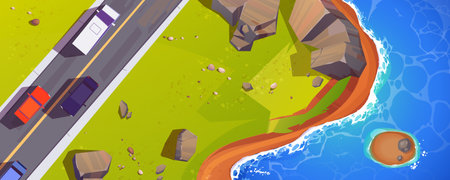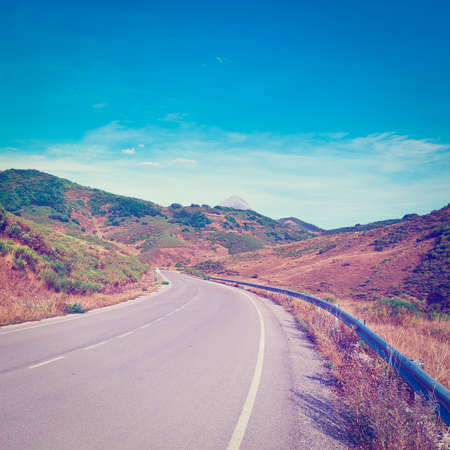Introduction to Car-Free Camping in the UK
Car-free camping is swiftly becoming a hallmark of the British outdoor experience, especially across England, Scotland, and Wales. As the UKs public transport network reaches even the wildest corners of its countryside, adventurers are discovering a new sense of freedom by leaving their cars behind. This movement isn’t just about reducing carbon footprints or dodging traffic—it’s about returning to the roots of British rambling culture, where journeys begin at the train station and end at a windswept moor or a hidden lakeside pitch. For many Brits, car-free camping evokes classic tales of walking holidays, Ordnance Survey maps in hand, and impromptu stops at local pubs along the way. The beauty of Britain’s compact landscape means that some of the most stunning campsites—whether nestled in the Lake District fells, perched on Welsh coastal cliffs, or tucked away in remote Highland glens—are accessible without ever turning a car key. By embracing car-free adventures, campers tap into a tradition that prizes self-reliance, sustainable travel, and an intimate connection with both land and local communities. It’s this uniquely British blend of rugged individualism and collective stewardship that makes car-free camping more than just a trend: it’s a revival of what it truly means to roam wild across these storied isles.
2. Essential Gear and Packing Tips for Car-Free Adventures
If you’re heading out to one of the best car-free campsites in England, Scotland, or Wales, packing smart is non-negotiable. Every ounce counts when you’re lugging your kit on foot, slinging it over your shoulder on a bike, or cramming it into the overhead rack of a train. Forget the boot-loads of kit – this is about gritty essentials and clever choices, honed by years on blustery fells and boggy moorland.
Packing Priorities: What to Take and Why
Car-free camping means stripping back to what you truly need. Here’s a no-nonsense rundown of what should make the cut:
| Category | Must-Have Items | Top Tip |
|---|---|---|
| Shelter & Sleep | Lightweight tent or bivvy, compact sleeping bag (3-season at minimum), inflatable mat | Go for double-wall tents if you’re heading north; condensation is relentless in Scottish drizzle. |
| Cooking & Food | Alcohol/multi-fuel stove, titanium pot, spork, dehydrated meals, brew kit (tea is non-negotiable) | Decant tea bags and instant coffee into zip-locks – saves space and avoids soggy disasters. |
| Clothing | Merino base layers, hard-shell waterproof jacket, quick-dry trousers, warm hat & gloves | Layer up – British weather is famously fickle. Avoid cotton like the plague. |
| Navigation & Safety | OS map (paper trumps phone battery), compass, torch/headlamp, small first aid kit | A whistle and power bank could save your skin if things go sideways. |
| Other Essentials | Water filter or purification tabs, pack towel, rubbish bags (leave no trace), basic toiletries | Fill up water bottles before leaving civilisation – some sites are remote with zero taps. |
The Art of Packing Light: Ruthless but Ready
You’ll want to keep your total pack weight below 12kg if possible. Test-pack before setting off – walk around the block with your full rucksack or panniers to spot any weak links. Multi-use items are king: think buffs that double as beanies, dry bags as pillows, and gaffer tape wound round a trekking pole for field repairs. Ditch anything that doesn’t earn its place daily.
Bikes vs Public Transport: Different Tactics
If you’re cycling in, invest in quality panniers with waterproofing. For trains and buses, modular stuff sacks help you grab essentials without unpacking everything in front of bemused commuters. Always have your ticket and ID within easy reach.
No-Nonsense Advice from Locals
The British countryside rewards those who come prepared for mud and midges alike. Don’t skimp on waterproofs or snacks – rural shops close early and weather turns fast. Remember: every gram saved is more energy for wild swimming or a pint at the local after pitching camp.

3. Top Car-Free Campsites in England
England’s rolling hills, dramatic coastlines, and storied woodlands are home to some of the UK’s finest campsites—many of which you can reach without ever turning a car key. Here, we spotlight standout spots that combine rugged adventure with classic English charm, all accessible by train, bus, or even a boot-worn footpath.
H4: Eweleaze Farm, Dorset
Nestled above the Jurassic Coast, Eweleaze Farm is only a 15-minute walk from Weymouth train station, followed by a scenic bus ride. The campsite offers unspoilt sea views, direct access to the South West Coast Path, and a true back-to-nature feel—pitch up on grassland meadows dotted with wildflowers. Don’t miss sunrise over the Channel and local produce in the on-site farm shop.
H5: Fisherground Campsite, Lake District
Set deep in Eskdale Valley and famed for its wild beauty, Fisherground is accessible via the Ravenglass and Eskdale heritage railway—a joyride through the heart of Cumbria. Arrive at Eskdale Green station and you’re a stone’s throw from your pitch. Expect campfires, woodland trails, and mountain views—classic Lake District grit without the traffic jams.
H5: Wowo Campsite, East Sussex
Hop off the train at Sheffield Park or Haywards Heath and catch a local bus or enjoy a sturdy countryside walk to Wowo Campsite. Known for its friendly vibe and woodland pitches beneath ancient oaks, it’s an ideal spot for families and wild campers alike. Tuck into communal fire pits and stargazing nights—all with easy links back to London if you need to make a quick escape.
H5: Blackberry Wood, Sussex
Blackberry Wood is a quirky favourite tucked into the South Downs near Ditchling. Trains from Brighton or London connect you to Hassocks station; from there it’s a gentle countryside stroll. Expect secluded glades for pitching tents, unique glamping options (think converted double-decker buses), and quick access to legendary hiking routes like the South Downs Way.
H5: Secret Seaside Sites
If coastal camping is your thing, look no further than campsites near Scarborough or Robin Hood’s Bay in North Yorkshire—both reachable by train and local bus. Wake to gulls wheeling overhead and spend your days roaming windswept cliffs or fossil hunting along pebbled beaches. These car-free gems offer that windswept English seaside spirit—no parking permits required.
Whether you’re after windswept moors, leafy woods or bracing sea air, England’s best car-free campsites prove you don’t need four wheels for an epic escape. Just pack your kit, grab your railcard, and let the countryside come to you.
4. Best Car-Free Camping Spots in Scotland
Scotland’s wild and windswept landscapes are a haven for hardier campers seeking true adventure—no car required. The country’s legendary lochs, misty glens, and rugged coastlines offer ample opportunity for those willing to travel light and embrace the unpredictable weather. Here’s how to reach some of the finest remote Scottish campsites by public transport or on foot, along with survival tips for thriving off the beaten path.
Top Car-Free Campsites in Scotland
| Campsite | Nearest Public Transport | Key Features |
|---|---|---|
| Sands Caravan & Camping Park (Gairloch) | Bus from Inverness to Gairloch | Beach access, wild scenery, basic facilities |
| Loch Ossian Youth Hostel (Corrour) | Train to Corrour Station (no road access) | Remote lochside, eco-friendly, bothies nearby |
| Luskentyre Beach (Isle of Harris) | Ferry from Ullapool, bus across Harris | White sands, wild camping, open views |
| Camasunary Bay (Isle of Skye) | Bus to Elgol, hike in (rough path) | Wild camping only, dramatic Cuillin backdrop |
Navigating Scotland’s Wild Terrain Without a Car
- Plan your route: Scottish public transport can be patchy in rural areas. Use Traveline Scotland or local bus and ferry timetables. Trains to Corrour or Mallaig are classics for accessing true wilderness.
- Prepare for four seasons in a day: Even in summer, pack waterproofs, thermal layers, and reliable boots—Scotland’s weather is notoriously fickle.
- Know your limits: Distances on maps often underestimate the challenge—boggy ground and steep climbs can double journey times. Let someone know your plan if you’re heading into remote areas.
- Treat water before drinking: Scottish burns and lochs may look pristine but always filter or boil water before use.
- Bivvy bags and bothies: Consider carrying a bivvy bag for emergencies or seek out bothies—simple shelters maintained by the Mountain Bothies Association—but expect no luxuries.
Local Transport Quirks to Be Aware Of
- Buses often don’t run late: Last departures from remote villages can be mid-afternoon. Always check return journeys before setting out.
- Bikes are usually free on trains: But spaces are limited and must be reserved—ideal for extending your range once off the train.
- Ferry crossings can sell out: Book CalMac ferries in advance when heading to islands during peak months.
The Hard Truth: Wild Camping Etiquette in Scotland
The Land Reform (Scotland) Act 2003 gives everyone the right to camp wild on most unenclosed land—but with freedom comes responsibility. Leave no trace, keep fires minimal and controlled (if allowed), respect privacy, and move on after two nights at any one spot. In short: take only memories, leave only footprints—and maybe a few midge bites as your badge of honour.
5. Car-Free Camping Experiences in Wales
Discovering Wales: Unplug and Embrace the Wild
If you’re seeking rugged beauty, green valleys, and a proper escape from city life, Wales delivers car-free camping like nowhere else. Whether you’re venturing into the wilds of Snowdonia or the tranquil coast of Pembrokeshire, this Celtic land offers a mix of established campsites and wilder spots where cars are out and adventure is in.
Top Car-Free Campsites and Wild Spots
Snowdonia National Park
The heart of Welsh adventure, Snowdonia boasts multiple campsites accessible by train or bus. Try Cwellyn Arms Campsite, just a stone’s throw from Rhyd Ddu railway station on the Welsh Highland Railway. From here, legendary walking trails beckon—think the Rhyd Ddu Path up Yr Wyddfa (Snowdon), all without touching a steering wheel.
Pembrokeshire Coast
For sea breezes and cliff-top pitching, check out Trellyn Woodland Camping near Abercastle. Reachable by local buses from Haverfordwest or Fishguard, it’s ideal for walkers hiking the epic Pembrokeshire Coast Path. Don’t miss wild swimming at hidden coves and sunset views straight from your tent flap.
Making Public Transport Work for You
Wales’ rural bus and rail network might seem patchy at first glance, but with a bit of grit and planning, it gets you remarkably close to the action. The Conwy Valley Line is a lifeline to Snowdonia’s villages, while TrawsCymru buses cover vast stretches of the countryside. Download timetables beforehand and pack light—many Welsh stations are request stops or need a brisk walk to your final destination.
Walking Routes: Your Ultimate Connection
The real magic happens on foot. Most car-free Welsh campsites link directly to national walking routes like the Glyndŵrs Way, Offa’s Dyke Path, or local circulars that wind through sheep-dotted hillsides and ancient woodland. Bring OS maps (paper or downloaded) and prepare for changeable weather; waterproofs are non-negotiable here.
Local Tips for a Proper Welsh Adventure
- Shop Local: Many village shops stock fresh bread, Welsh cakes, and supplies—support them rather than hauling everything in.
- Bivvy Bag or Lightweight Tent: Essential if you plan on wild camping (where allowed)—the weather can turn on a sixpence.
- Pubs for Shelter: Rain incoming? Duck into a local pub; many offer hearty meals and honest chat about best walking routes or hidden camp spots.
This is car-free camping in Wales: raw, untamed, full of character—and best experienced on your own two feet with a rucksack on your back.
6. Staying Safe and Respecting the Land
When venturing to car-free campsites across England, Scotland, and Wales, safety and respect for the land are non-negotiable. The weather here is fickle; always check local forecasts before heading out, and pack for sudden rain or sharp temperature drops. Waterproofs and sturdy boots aren’t optional luxuries—they’re your first line of defence against the elements.
Know Your Rights—And Limits
Access laws differ dramatically between regions. In Scotland, thanks to the Land Reform Act, you enjoy greater freedom to wild camp responsibly. But even so, stick to the Scottish Outdoor Access Code: pitch away from homes and roads, keep groups small, and leave no trace. In England and Wales, wild camping without landowner permission is mostly off-limits outside specific zones like Dartmoor. Stick to designated sites unless you’ve got express consent.
Local Customs Matter
Respecting locals isn’t just good manners—it’s survival savvy. Keep noise down at night, avoid blocking paths or gates, and always close farm gates behind you. Rural communities can be tight-knit; a friendly word goes a long way if you’re passing through villages or using public transport.
Leave No Trace
“Take only pictures, leave only footprints” isn’t just a cliché here—it’s enforced by both culture and law. Carry out all rubbish. Use biodegradable soap sparingly and never near water sources. Fires are usually forbidden; opt for a stove instead, and use established fire pits only where allowed.
Emergency Know-How
No matter how well-mapped your route is, signal can vanish fast in remote valleys or upland moors. Let someone know your plans, carry an OS map and compass (and know how to use them), and familiarise yourself with local mountain rescue numbers. In an emergency, dial 999 and ask for Police Mountain Rescue in rural areas.
The Bottom Line
Campsite freedom comes with responsibility—embrace it hard. Stay alert to weather changes, follow local rules to the letter, and treat every landscape as if it were your own backyard. That’s not just British tradition; that’s how you earn your place on these wild isles.
7. Conclusion: Embracing the Car-Free Camping Mindset
Adopting a car-free approach to camping in England, Scotland, and Wales is more than just a logistical decision—it’s a commitment to low-impact travel and a truly immersive outdoor experience. Choosing to leave the car behind brings undeniable advantages: it reduces your carbon footprint, encourages you to engage with local transport networks, and fosters a deeper connection with the natural world around you. Navigating by train, bus, or even bike demands planning and resourcefulness—qualities at the heart of every seasoned camper. Of course, there are challenges: public transport timetables may not always align with your ideal itinerary, and carrying kit requires careful packing. Yet these hurdles pale in comparison to the rewards—think quieter campsites off the beaten track, uninterrupted landscapes unmarred by car parks, and the satisfaction of true self-reliance. By embracing a car-free camping ethos, you’re not only treading lighter on Britain’s treasured countryside but also championing a future where wild places remain unspoiled for generations to come. So gear up, plan ahead, and set out on your next adventure—proving that some of the best campsites in the UK are reached by foot, pedal, or public transport, not by four wheels.


